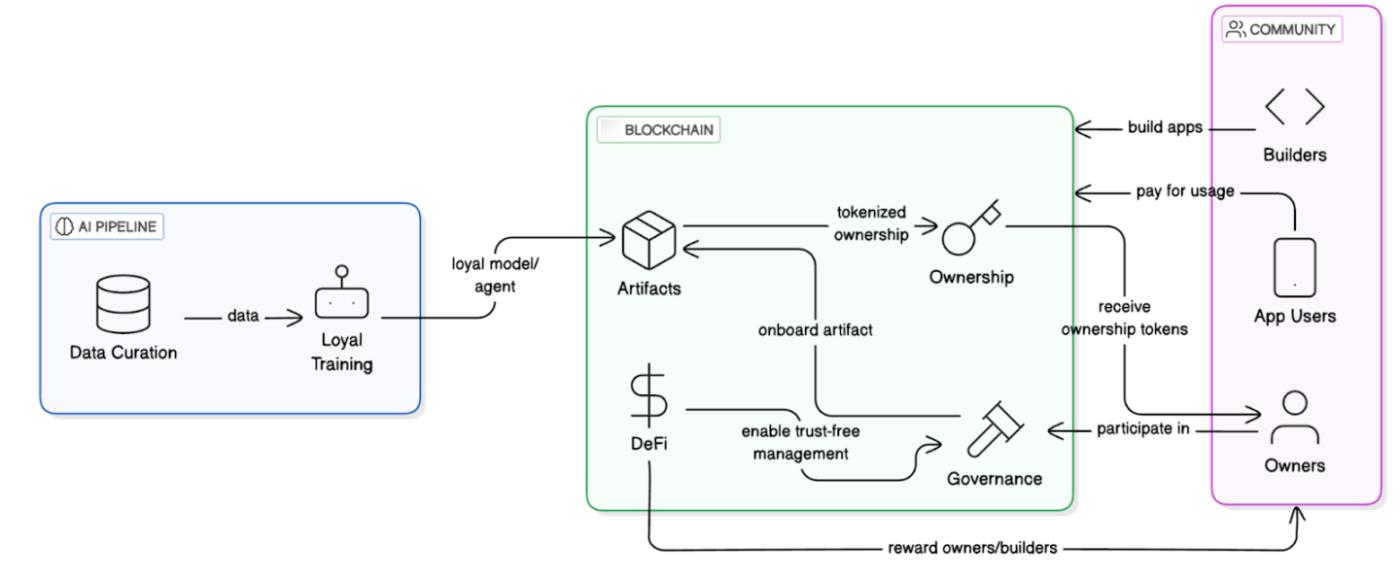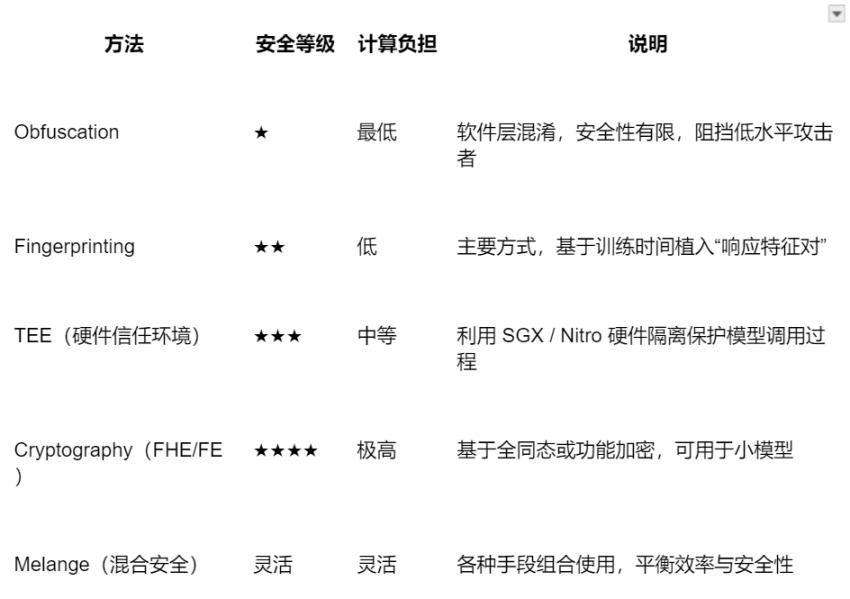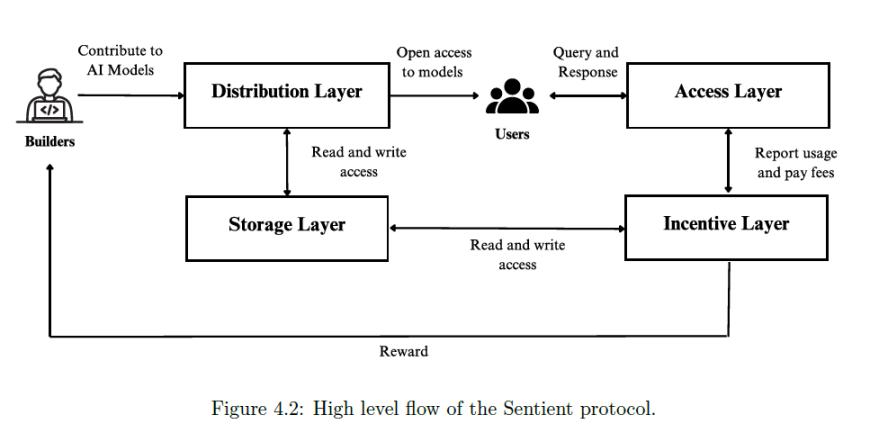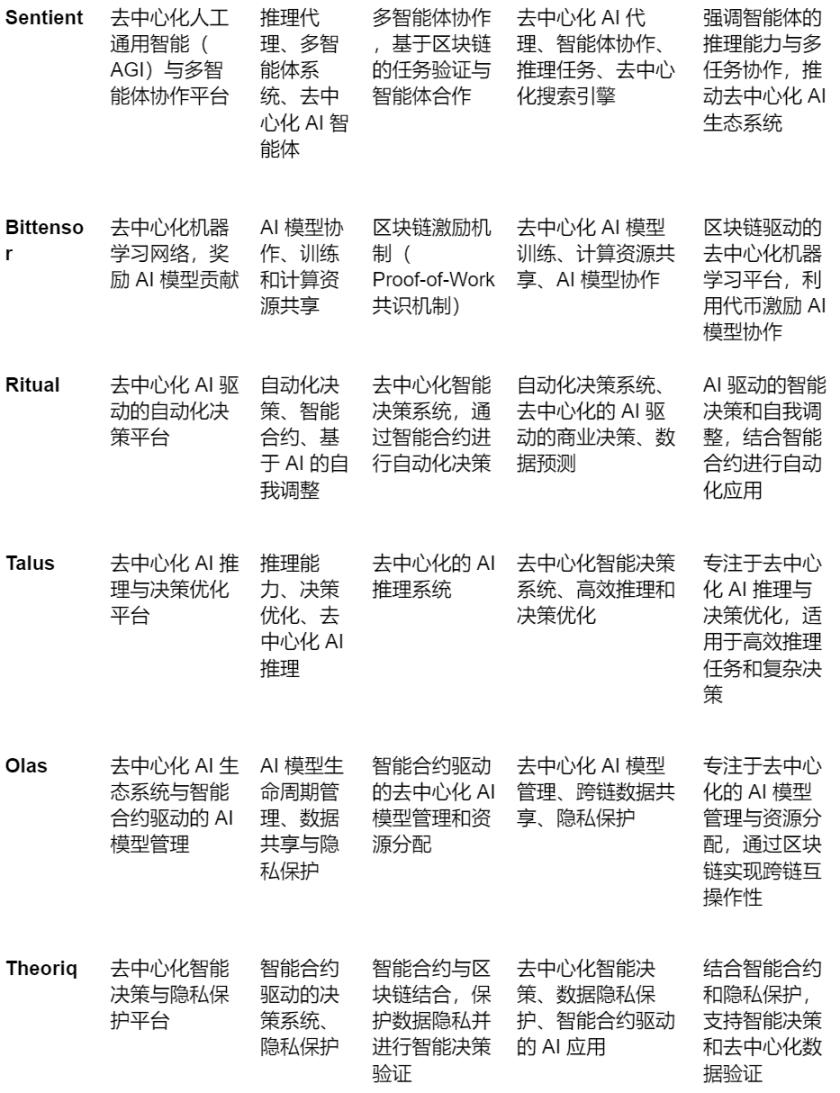Written by: 0xjacobzhao and ChatGPT 4o/Grok3
1. Project Introduction:
Sentient is an open-source protocol platform dedicated to building a decentralized AI economy. Its core goals are to establish an ownership structure for AI models, provide an on-chain call mechanism, and build a composable and profit-sharing AI agent network. Through its "OML" (Open, Monetizable, Loyal) framework and model fingerprinting technology, Sentient addresses the fundamental issues of the current centralized LLM market: unclear model ownership, untraceable calls, and unfair value distribution.
- Official website: https://www.sentient.xyz
- GitHub: https://github.com/sentient-agi
- Sentient Foundation: https://sentient.foundation
- Documentation: https://docs.sentient.xyz
- Blog: https://www.sentient.xyz/blog
- X: https://x.com/SentientAGI
Driven by the Sentient Foundation, the project focuses on building open-source AGI and protocol incentive mechanisms. The "Loyal AI" it advocates for refers to an open AI model ecosystem that serves the community, is fairly governed, and can evolve over the long term.

The architecture of Sentient Protocol consists of two core components: the blockchain system and the AI Pipeline.
The AI Pipeline is the foundation for developing and training Loyal AI artifacts and consists of two core processes:
- Data Curation: A community-driven data selection process for model alignment.
- Loyalty Training: The training process that ensures the model remains aligned with the community's intent.
The blockchain system provides transparency and decentralized control for the protocol, ensuring ownership and governance of AI artifacts. The main modules include:
- Governance: Control and decision-making by a decentralized autonomous organization (DAO).
- Ownership: Tokenization is used to represent ownership of AI artifacts.
- Decentralized Finance (DeFi): Providing financial tools that support open, decentralized, and fair governance and rewards.
2. Technical Architecture and Model Confirmation Mechanism:
1. OML Model Framework
In the white paper "Sentient: Loyal AI" released in 2024 (https://arxiv.org/abs/2411.03887), the project proposed the OML framework, which takes model ownership as the starting point and attempts to build an "on-chain AI ownership protocol economy". For the first time, it systematically proposed the concept of "AI native cryptography", aiming to provide an encryption-level ownership protection mechanism for open source models.
Interpretation of the core paper - "OML: Open, Monetizable, and Loyal AI":
- Open: The model must be open source, with transparent code and data structure, and support community replication, auditing, and forking;
- Monetizable: Every call to the model should trigger a revenue stream that is distributed to trainers, deployers, and validators through on-chain contracts.
- Loyal: The model does not belong to the company, but to the contributor community. The model upgrade direction and governance are determined by the DAO. Model ownership is verifiable, modification is restricted, and use is controlled.
OML is not equivalent to a code license agreement. Instead, it uses on-chain mechanisms and encryption to ensure that open source models maintain economic sovereignty and governance while maintaining openness. It constructs an AI-native ownership and revenue protocol layer to ensure clear ownership, economic incentives, and behavioral governance even when models are publicly available.
Core Concept: AI-native Cryptography
Unlike traditional cryptography, which focuses on binary precision, AI-native cryptography leverages the continuity, low-dimensional manifold structure, and differentiability of AI models to develop a lightweight security mechanism that is "verifiable but not removable." Its core technologies are:
- Model Fingerprinting: inserting a set of hidden query-response key-value pairs during training to form a unique signature of the model;
- Ownership Verification Protocol: A third-party detector (Prover) verifies whether the fingerprint is retained in the form of a query;
- Permission call mechanism: Before calling, you need to obtain the "authorization certificate" issued by the model owner. The system then authorizes the model to decode the input and return the correct answer.
This approach can achieve "behavior-based authorization call + ownership verification" without the cost of re-encryption.
OML's five component types:

Sentient currently utilizes Melange hybrid security: a combination of fingerprint authentication, TEE execution, and on-chain contract profit sharing. The fingerprint method forms the backbone of OML 1.0, emphasizing the concept of "optimistic security," where compliance is assumed by default and violations can be detected and punished.
In addition, the paper defines multiple verification mechanisms and attack models for the fingerprint mechanism:
- Fine-tuning attack (LoRA/SFT): Modify some parameters to try to remove fingerprints;
- Knowledge distillation: building student models to avoid parent model fingerprints;
- Parameter averaging (model merging): Multi-model fusion attempts to dilute fingerprint strength;
- Fingerprint leakage attack: If the fingerprint key is leaked, the verification mechanism will become ineffective.
Adversarial methods include: multiple rounds of embedding, subnet isolation training; combining benign samples to prevent forgetting; and binding embedding weights to on-chain credentials.
OML and Sentient Protocol Architecture
The last chapter of the paper proposes a complete on-chain protocol (Sentient Protocol) to support OML:
- Storage layer: stores model weights and fingerprint registration information;
- Distribution layer: authorization contract control model call entry;
- Access layer: Verify user authorization through permission proof;
- Incentive layer: The revenue routing contract distributes the payment for each call to the trainer, deployer, and validator.

Emphasizing compatibility with L1 mainchains like Ethereum, it can be used as a standard protocol stack for on-chain AI ownership. All models are registered on-chain (including hashes, signatures, public keys, and fingerprint structure IDs). Agents are bound to registered models and trigger proof of use submission after each call. Contracts distribute profits (trainers, deployers, and verifiers) based on call events and revenue flow rules. Users or contract callers must verify call permissions through an on-chain gateway. This structure forms the underlying design philosophy of Sentient Protocol.
2. Fingerprint recognition and model ownership confirmation mechanism
GitHub: https://github.com/sentient-agi/oml-1.0-fingerprinting
This library is the first implementation of the Sentient fingerprinting mechanism, providing a fingerprint injection and verification interface that can be embedded into the training process. Its purpose is to ensure verifiable model ownership and traceable usage, preventing unauthorized copying and commercialization. This is a concrete engineering implementation of the OML (Open, Monetizable, Loyal) framework.
The OML 1.0 Fingerprinting Module has the following functions:
- Behavioral Profiling: Extract features from model behaviors to generate unique fingerprints.
- Model Attribution: Determine the source model based on the generated content.
- Fingerprint Verification: Verify the source and consistency of model output content.
The essence of the fingerprinting mechanism is that by fine-tuning the model, a unique set of question-answer (key-response) pairs is embedded. Model owners can verify that the model belongs to them through specific queries, thus forming a "cryptographic signature" of the model. In short, this "watermarking" of the LLM (Large Language Model) allows tracking and enforcing AI ownership.
3. Enclave TEE Computing Framework
GitHub: https://github.com/sentient-agi/Sentient-Enclaves-Framework
The Sentient Enclaves Framework is an open-source framework that leverages trusted execution environments (TEEs) such as AWS Nitro Enclaves to enable secure deployment of model inference, fine-tuning, and proxy services. The framework emphasizes model integrity, ensuring that models only respond to authorized requests and preventing unauthorized access and use. Its security features include:
- Payload encryption deployment: The model body, running configuration, input and output are all encrypted and stored in the enclave;
- TLS-based RPC: calls use two-way TLS + attestation signature channel for communication;
- Log and cache isolation: Use the transient memory area to run and do not record permanent logs;
- Attestation report: Generates an output certificate bound to the enclave signature for each call, ensuring that the execution behavior is traceable and verifiable.
The Sentient Enclaves Framework (TEE) boasts high performance and cloud integration, making it suitable for real-time AI and sensitive data processing. However, it is limited by hardware dependencies and side-channel attacks. The Sentient Enclaves Framework leverages Nitro Enclaves to provide enterprise-grade privacy protection and a more user-friendly development experience. Compared to other cryptographic technologies, FHE offers strong privacy guarantees without hardware dependencies and quantum security, but it carries significant performance overhead, making it suitable for specific cryptographic computing scenarios and difficult to directly replace TEEs for high-performance tasks. ZK excels in verifiability and decentralization scenarios, and can complement TEEs (this module plans to integrate with zkML in the future).
4. Sentient Agent Framework
GitHub: https://github.com/sentient-agi/Sentient-Agent-Framework
Sentient-Agent-Framework is a lightweight open-source framework focused on automating web tasks (such as searching and playing videos) by controlling the browser through AI agents. It combines natural language instructions with LLMs (such as OpenAI's GPT-4o) to provide a concise development experience (reportedly requiring only 3 lines of code). Its asynchronous execution, custom instructions, and multi-provider support make it suitable for rapid development and experimental applications. When combined with other Sentient AGI projects (such as the TEE framework), it can be extended to security-sensitive scenarios.
Core architecture: This architecture supports the construction of an intelligent agent with a complete closed loop of "perception-planning-execution-feedback", and can be expanded into a multi-agent collaborative, on-chain verified, and alignable open source AI system.
- User Layer: Users input task objectives through natural language
- Sentient Agent Framework
- Perception: Understanding input and environment
- Planning: Generate action plans based on goals
- Execution: Calling tools/skills to perform tasks
- Reflection: Analyze feedback and optimize behavior
- Memory: Short-term + long-term memory management
- Skills/Tools: Register external functions and plugins
- Collaboration Layer (Multi-Agent Layer): Multi-Agent collaboration, task allocation, and result aggregation
- External Integration
- Blockchain smart contracts: record tasks and incentivize settlement
- Agent Registry: Identity Authentication and Version Control
- ZK Proof Module: Verifying Output Authenticity
- External tool API: such as web search, database, file system, etc.
- Storage layer: local storage + decentralized storage (such as IPFS)
Compared to traditional AI agent frameworks, Sentient-Agent-Framework is lightweight and limited in functionality. Compared to other crypto AI frameworks like Virtuals Protocol and ai16z (elizaOS), which offer diverse solutions for AI agent development, on-chain automation, and Web3 integration, Sentient-Agent-Framework is more suitable for off-chain web tasks.
5. Sentient Social Agent
GitHub: https://github.com/sentient-agi/Sentient-Social-Agent
Sentient-Social-Agent is an AI system designed to automate interactions on social platforms (Twitter, Discord, and Telegram). It can understand social contexts, generate content, engage with users, and facilitate social communication through multi-agent collaboration. Leveraging social perception, content generation, and behavior planning modules, it supports natural conversations and content creation on the platforms. It is suitable for scenarios such as brand operations, virtual community management, and information dissemination. The system can be integrated with the Sentient Agent framework.
6. Open Deep Search (Not yet launched)
On the Sentient website, Open Deep Search is defined as a search agent that surpasses ChatGPT and Perplexity Pro. Team member Sewoong Oh revealed some of the plans at the EthDenver 2025 Open AGI Summit:
Open Deep Search consists of two main components: Sensient's search functionality (including query rephrasing, URL and document processing, and more) and an inference agent. The inference agent leverages open-source LLMs (such as Llama 3.1 and DeepSeek) to improve search quality through tools like search, calculators, and self-reflection. On the Frames Benchmark, Open Deep Search outperforms other open-source models and even rivals some closed-source models. However, due to the feature not yet being released, we are unable to evaluate its true capabilities.
3. Product Form, Implementation and Planning
Currently, the products displayed on Sentient's official website are mainly the Sentient Chat chat platform and the open source model Dobby LLMs:
Sentient Chat:
Sentient Chat is a decentralized AI chat platform launched by the Sentient Foundation, designed to provide a community-driven, customizable, and loyal AI experience. The platform combines open-source large-scale language models (such as the Dobby series) with an advanced inference agent framework, supporting multiple tool integrations to meet diverse user needs. Core features include:
1. Open Reasoning Agent: Sentient Chat's built-in reasoning agent can perform complex tasks and supports the following features:
- Search tools: Integrated Open Deep Search (ODS) to provide real-time web search capabilities.
- Calculator: Handles mathematical calculations and data analysis tasks.
- Code execution: Generate and run Python code to achieve complex logical reasoning and task execution.
2. Multi-agent integration: The platform supports the integration of multiple AI agents. Users can choose different agents to interact with according to their needs, which improves the flexibility and functionality of the platform. Similar to the Web3 version of POE or the open, agent-driven Perplexity alternative
Sentient Chat is currently in beta, accessible only via invitation codes distributed via email or community events. According to official information, over 5,000 users have successfully obtained access to Sentient Chat, and it has processed over 100,000 user queries. Since I'm not currently a whitelisted user for the beta test, I'm unable to assess the model's true capabilities.
Dobby LLM Model Series:
Based on Meta's Llama series with fine-tuning, Hugging Face homepage (https://huggingface.co/SentientAGI)
1. Dobby-Unhinged Series
- Dobby-Unhinged-Llama-3.3-70B: Based on the Llama 3.3-70B-Instruct, it emphasizes personal freedom and cryptocurrency, and has a straightforward, humorous, and humanistic conversation style. Hugging Face+6Hugging Face+6Hugging Face+6
- Dobby-Mini-Unhinged-Llama-3.1-8B: 8B parameter version, suitable for resource-constrained devices, maintaining the core features of the "Unhinged" series. Hugging Face+5Hugging Face+5Hugging Face+5
2. Dobby-Leashed Series:
Dobby-Mini-Leashed-Llama-3.1-8B: Compared to the "Unhinged" version, the tone is gentler and suitable for applications that require more robust output. Hugging Face+2Hugging Face+2Hugging Face+2
Because the Dobby LLM model is a fine-tuned version of Llama 3.1 and 3.3, we believe its primary application scenarios are chatbots, content generation and creation, and role-playing agents. Its strengths lie in its flexible style generation, enhanced reasoning, and low resource requirements, making it suitable for rapid deployment and flexible customization in resource-constrained environments. Compared to more powerful closed-source models like GPT-4, Dobby LLM still lags behind in handling tasks involving advanced logic, cross-domain knowledge reasoning, and deep reasoning.
4. Ecosystem Cooperation and Implementation Scenarios
Currently, the Sentient Builder Program provides $1 million in funding to support developers in building AI agents that run in the Sentient Chat ecosystem. Developers are required to use Sentient's development kit and access its ecosystem through the Sentient Agent API.
At the same time, Sentient’s official website announced that its ecosystem partners include project teams in multiple fields of Crypto AI (https://www.sentient.xyz/partners). The specific list is as follows:
- Models: Eigenlayer, Move, CrunchDAO, Bagel, KGEN
- Agents: Messari, Franklin Templeton, Kaito, MyShell, Third Web, Theoriq, Open, QNA3, Pond, Mira, Olas, Biconomy, Talus, Zettablocks, Axal, Morpheus AI, dFusion, ExponentAI, Fetch AI, Giza, JustTX, UnifAI, Questflow, QuillAI, Raiinmaker, Solo, Spectral, UOMI, PlayAI
- Data: Kaito, Vana, The Graph, Space and Time, 0g, Open, QNA3, Zettablocks, Chainbased, dFusion, Dria/First Batch, Entrova, FractionAI, Hyve DA, Irys, Masa, Mizu, OpenLedger, Raiinmaker, Sapien, Zus Network
- Verifiable AI: Nillion, Lagrange, pi2
- Blockchain: Arbitrum, Polygon, Celo
- Infrastructure: Lit Protocol, OpenGradient
As a leading project in the crypto AI field, Sentient's resource integration capabilities can cover any star startup in the industry. However, it should be noted that the widespread use of "marketing-focused" collaborations in the crypto space has created a false sense of prosperity. The contribution and loyalty of Sentient's ecosystem partners to the ecosystem remains a matter of ongoing observation.
The Open AGI Summit, organized by the Sentient team, is a global conference dedicated to exploring the intersection of artificial intelligence (AI) and cryptography. I had the privilege of attending the 2024 and 2025 summits at ETH Denver and ETHcc. The Sentient team's ability to attract the industry's leading institutional investors and project entrepreneurs was a real highlight.
5. Team Structure and Research Background
The Sentient Foundation brings together top academic experts, crypto industry entrepreneurs, and engineers from around the world to build a community-driven, open-source, and verifiable AGI platform. According to the official team information (https://sentient.foundation/people), the team members are:
Steering Committee
- Pramod Viswanath – Forrest G. Hamrick Professor at Princeton University, has long been researching information theory and communication systems, and leads Sentient’s AI security and theoretical foundation.
- Himanshu Tyagi – Professor at the Indian Institute of Science, specializes in privacy protection and decentralized learning algorithms, and provides academic support for model training and privacy collaboration.
- Sandeep Nailwal – Co-founder of Polygon, responsible for blockchain strategy and global ecosystem layout, and a key figure connecting the crypto community and AI architecture.
- Sensys Team – A Web3 native product studio, leading user experience optimization and developer infrastructure development to promote the implementation of Sentient products.
The core engineering and development team is comprised of researchers from renowned tech and blockchain companies such as Meta, Coinbase, Circle, Polygon, and Binance, as well as graduates from universities such as Princeton University, the University of Washington, and the Indian Institute of Technology. Team members possess extensive experience in LLM engineering, system security, computer vision, and data systems development.
AI Research and Model Training Team: The research team covers AI/ML, NLP, computer vision, and reinforcement learning. Members have practical experience at institutions such as Google Research, Daimon Labs, and Fetch.ai. This team demonstrates Sentient's strong academic depth, practical capabilities, and crypto ecosystem experience.
It's worth noting that Sentient, from its inception, has been riding the coattails of Polygon founder Sandeep Nailwal's success. As a key scaling solution for the Ethereum ecosystem, Matic leveraged Plasma, a relatively inexpensive yet fast technology, to establish Polygon's competitive advantage in areas like NFTs and social networking. Simultaneously, through the acquisitions of Mir Protocol and Hermez Network and the launch of the Polygon zkEVM, Sentient integrated ZK technology into its blockchain scaling solutions. As Sandeep Nailwal's second venture, Sentient boasts far greater experience, funding, connections, and market recognition than its predecessor. While Sentient could raise significant funding in 2024 with a still-improved project concept, AI is distinct from crypto, and Sentient faces significant challenges, including a changing market environment, intensified competition, and technological advancements.
6. Financing and Token Model
- Funding time: mid-2024;
- Funding: $85 million (seed round)
- Investors: Founders Fund, Pantera, and Framework Ventures co-led the round, with participation from Ethereal, Robot Ventures, Symbolic Capital, Dao5, Delphi, Primitive Ventures, Nomad, Hack VC, Arrington Capital, Hypersphere, IDG, Topology, Protagonist, Folius, Sky9, Canonical Crypto, Dispersion Capital, Mirana, Foresight, Hashkey, Spartan, Republic, and Frontiers Capital. (https://sentient.foundation/funding)
$SENT Token Usage (Planning)
As of now, Sentient has not yet launched an official token. Co-founder Sandeep Nailwal stated that the project has no current plans to issue a token, but may evaluate this in the future based on community demand and project development. Therefore, any project claiming to offer $SEN or other Sentient-related tokens should be viewed with caution to prevent scams.
According to the white paper, possible uses of SENT tokens include: mapping agent incentive points to tokens; being used for model version management proposals and voting; staking to verify the authenticity of agent outputs; and a DAO governance dividend mechanism.
Sentient is a high-flying project born with a silver spoon in its mouth. Its investor background, funding scale, and valuation are all unmatched by most other crypto AI projects in the market. On the one hand, its strong backing makes it easier to integrate various industry resources. Its high funding amount makes it easier to recruit top talent to join its team, and its strong capital base can support the project's development through industry cycles. On the other hand, the current crypto industry is generally disenchanted with high-valuation projects backed by VCs. Furthermore, the price of VC tokens is primarily driven by capital operations and is significantly decoupled from fundamentals. If Sentient fails to deliver an impactful crypto AI product and ultimately opts for an inflated token offering, it will ultimately harm the crypto community, which desperately needs to rebuild trust. How the team navigates this current industry dilemma will remain to be seen.
7. Competitive Product Analysis and Market Position
Most crypto AI projects on the market focus on a single area, such as data, models, computing, training, or inference, or develop consumer applications like AI agents. Projects positioned as AI chains include the AI transformation of legacy blockchains (Near and ICP) or decentralized resource sharing, coordination, and token incentive protocols like Bittensor. Sentient's positioning doesn't fully align with these. On the model training side, Sentient acts more like an integration platform, collaborating with existing open-source AI models. On the agent side, Sentient competes with Talus, Olas, and Theoriq in multi-agent systems and inference capabilities, though some overlap exists. However, each project has distinct core goals and application scenarios, resulting in complementary opportunities.

8. Summary
Sentient, a decentralized artificial intelligence (AGI) protocol platform, aims to provide a clear ownership structure for AI models and facilitate access and value distribution through on-chain mechanisms, addressing the unclear ownership and unfairness in the current centralized LLM market. Its core framework, OML (Open, Monetizable, Loyal), leverages model fingerprinting and blockchain technology to ensure ownership, transparency, and fair profit sharing for open-source models. Leveraging the resources of Polygon co-founder Sandeep Nailwal, Sentient has secured the backing of numerous leading VCs and AI ecosystem partners. Despite facing development uncertainty, controversy, and competition, Sentient aspires to become a standard protocol for decentralized AI ownership and drive the decentralized development of AGI.







